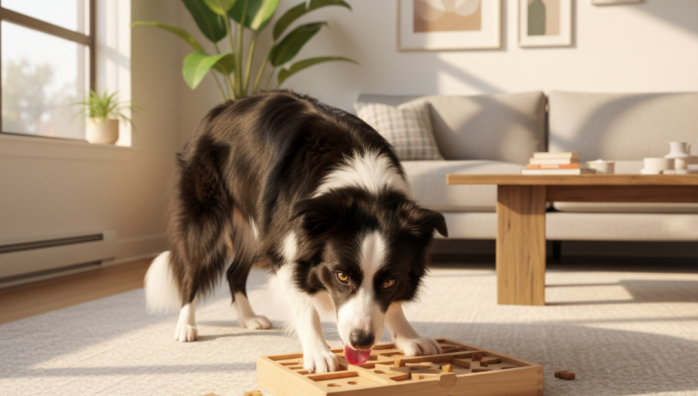Indoor games for high energy dogs
by admin in Pet Care Basics 17 - Last Update November 19, 2025

When I first brought home my Aussie, Finn, to my third-floor apartment, I had a recurring nightmare: I was a terrible dog owner. The guilt was immense. He had all this boundless energy, and I had no backyard. I quickly realized that physical exercise alone wasn\'t going to cut it. I had to learn how to exercise his brilliant mind, and that\'s when indoor games became our saving grace.
Why mental exercise is non-negotiable
I used to think tiring a dog out meant a long, hard run. But I\'ve learned that 15 minutes of focused brain work can exhaust my high-energy dog more than a 30-minute walk. It\'s about engaging their natural instincts to sniff, solve problems, and work. When these needs aren\'t met, you get the chewed shoes, the endless barking, and the general chaos. These aren\'t signs of a \'bad dog\'; they\'re signs of a bored one.
My favorite sanity-saving indoor games
Over the years, Finn and I have perfected our rainy-day routine. These are the games that work for us, right here in our living room. They require minimal space but deliver maximum mental stimulation.
The \'find it\' game
This is, without a doubt, our number one. It taps directly into a dog\'s most powerful tool: their nose. I started simply. I\'d have Finn sit and stay while he watched me place a high-value treat under a cup. Then I\'d release him with a cue like \"Find it!\". Now, I can hide treats all over the apartment, and he\'ll spend a solid 10 minutes diligently sniffing them out. He\'s always so proud of himself afterward, and I can visibly see him relax.
Puzzle toys and slow feeders
Mealtime used to be over in 30 seconds. Now, it\'s a 15-minute brain teaser. I feed Finn exclusively from puzzle toys and slow-feeder bowls. It forces him to think and problem-solve to get his food. There are tons of options out there, from beginner-level to advanced. I started with a simple KONG toy stuffed with his kibble and a bit of peanut butter and we\'ve worked our way up. Just be sure to supervise, especially if you have a powerful chewer.
Learn a new trick (or polish an old one)
Short, positive training sessions are incredible mental workouts. We spend about five minutes, twice a day, working on a new trick. It doesn\'t have to be anything complex. We\'ve worked on things like \'touch\' (touching his nose to my hand), \'spin\', and \'put your toys away\' (dropping toys into a basket). The focus and communication required are surprisingly tiring for him.
A quick note on safety
Living in a small space means being extra mindful. I always make sure to clear the area of anything he could knock over or slip on. A non-slip rug is a great idea. It\'s also important to remember that these games are a supplement, not a total replacement for outdoor time. But for those days when you\'re stuck inside, they are an absolute lifesaver. This is what has worked wonders for my dog, but I always recommend chatting with your vet to ensure any new activities are right for your specific pup\'s health and needs.














